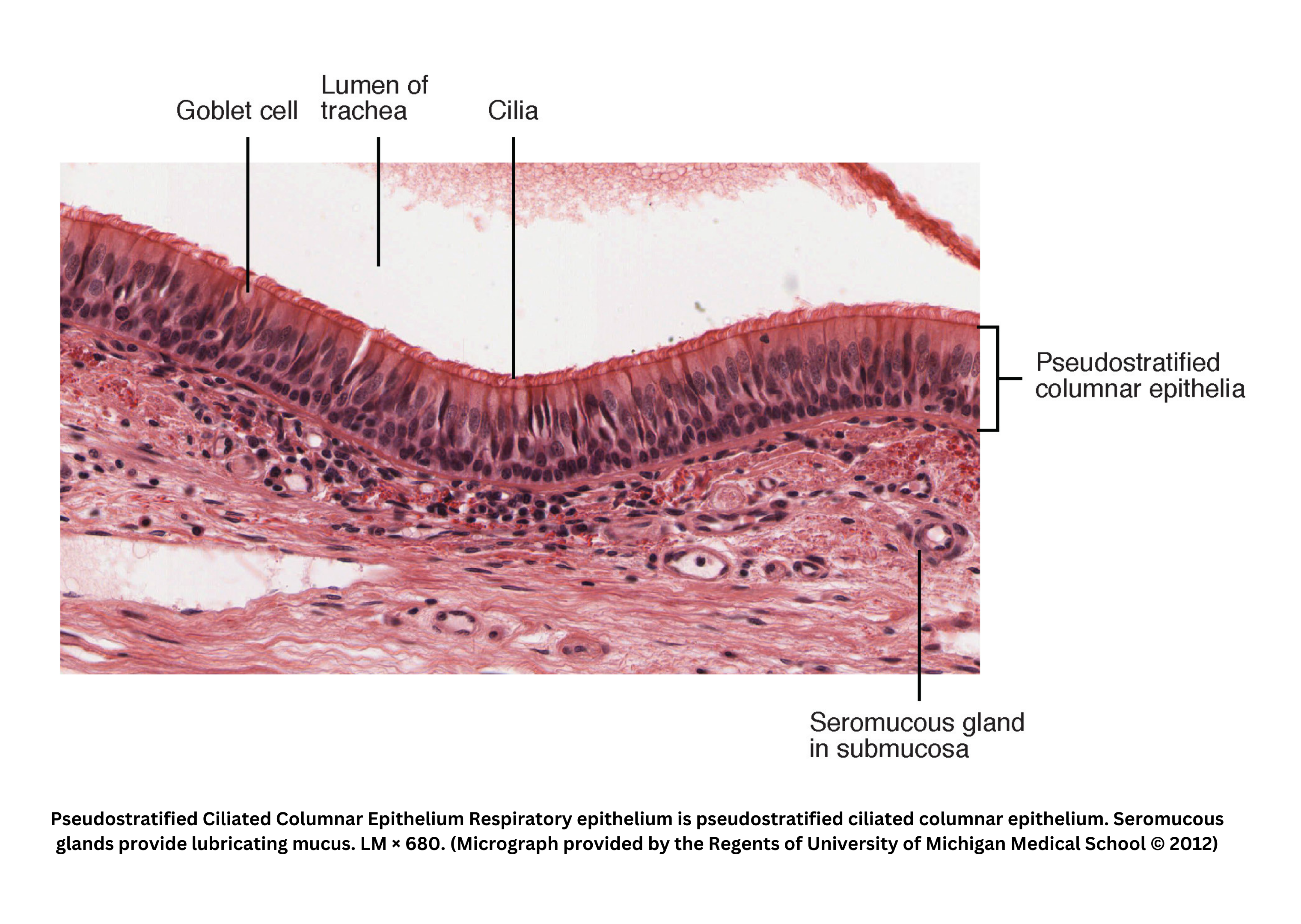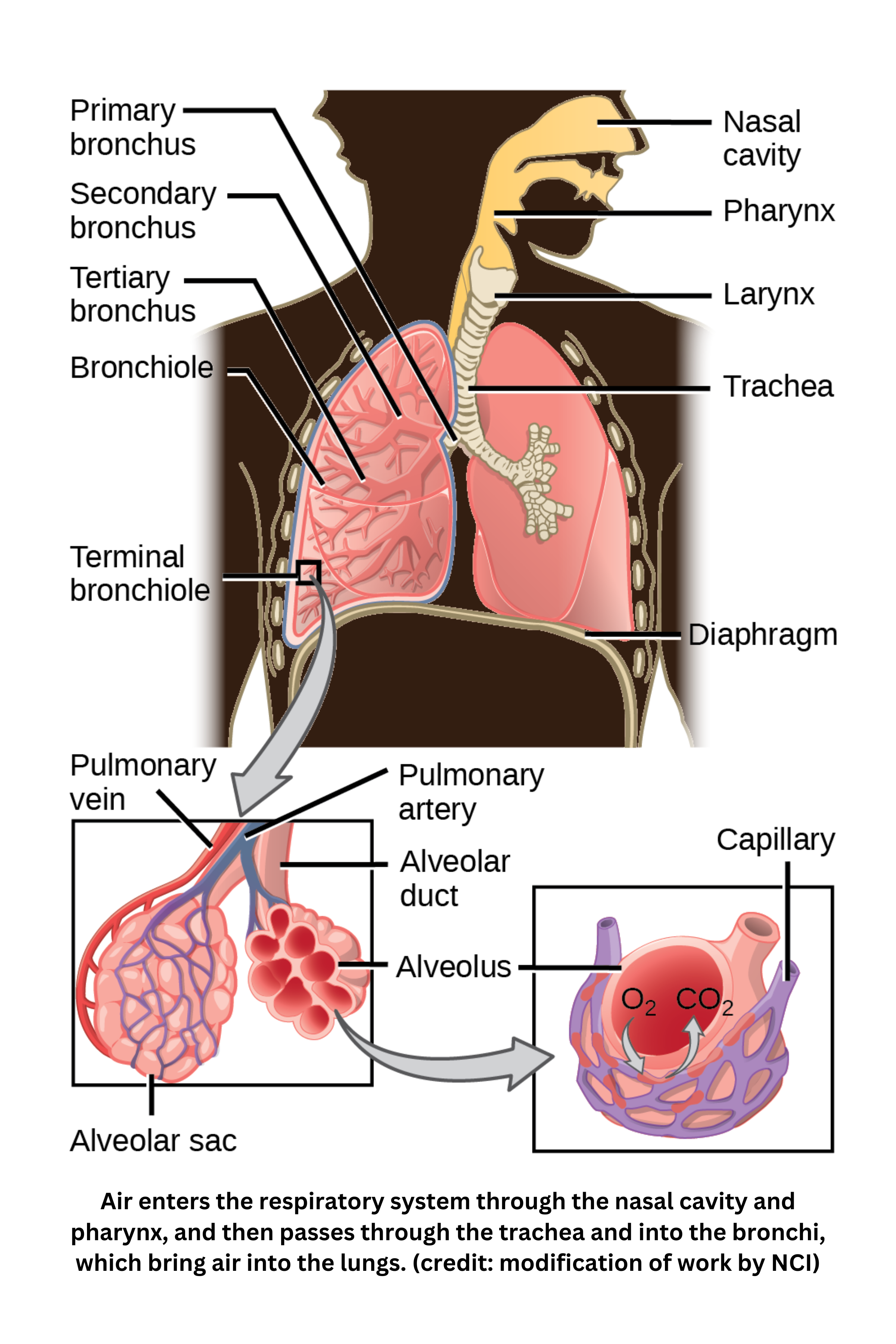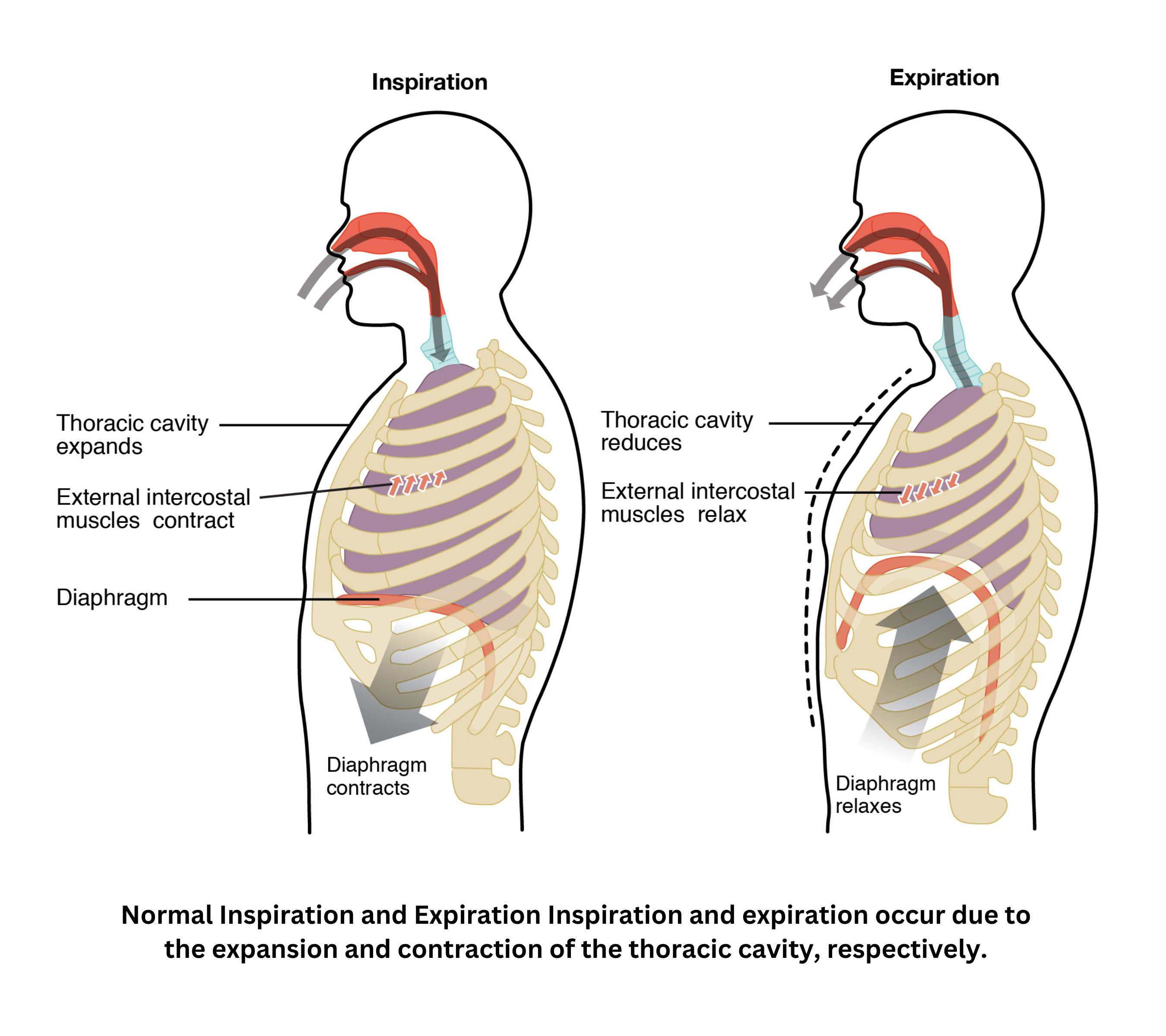The gas exchange process in the lungs relies on the diffusion of oxygen into the bloodstream and the removal of carbon dioxide from it. This movement is driven by Henry’s law, which states that a gas will dissolve in a liquid until it reaches an equilibrium concentration. Because the blood arriving in the lungs has lower oxygen levels due to prior usage by the body, oxygen diffuses into the blood, while the elevated carbon dioxide levels prompt its diffusion out.
Thermoregulation is influenced by breathing, as exhaling warm, moist air contributes to body heat loss.
The respiratory system employs several protective mechanisms against pathogens and particulate matter:
Nostril hair acts as an initial filter to catch larger particles before they enter deeper into the airways.
Once inhaled, mucus produced by Goblet cells, a specialized, columnar epithelial cell lining the respiratory tract, traps pathogens and finer particles. The trapped material is then moved out by cilia, tiny hair-like structures that sweep contaminants toward the throat, where they are either expelled or swallowed and neutralized by stomach acid.

In the alveoli, macrophages serve as a final defense by engulfing and destroying any foreign substances that are missed by the cilia and manage to reach these delicate air sacs.
Air enters through the nasal cavity, where it is warmed, humidified, and filtered by hair, mucus, and cilia. It then passes through the pharynx and the larynx into the trachea, a tube about 10–12 cm long supported by hyaline cartilage rings and smooth muscle that can contract during forced exhalation (e.g., coughing).
The trachea splits into two primary bronchi, each entering a lung. Within the lungs, these bronchi branch into secondary and tertiary bronchi, then into smaller bronchioles, which rely on air pressure (rather than cartilage) to stay open.
The lungs themselves differ in size: the right lung has three lobes, whereas the left lung has two. Below them lies the diaphragm, a muscular boundary at the base of the thoracic cavity that drives inhalation by lowering and expanding the chest volume.
At the end of each bronchiole, alveolar ducts lead to clusters of alveoli, which resemble tiny bubbles arranged in alveolar sacs. Each alveolus is surrounded by capillaries; both are one cell thick, allowing gas exchange (oxygen in, carbon dioxide out) across their thin walls. With around 300 million alveoli per lung creating a total surface area of ~75 m², this structure maximizes efficient oxygen delivery to the bloodstream and removal of carbon dioxide from it, giving the lungs their soft, sponge-like texture.


The diaphragm is a dome-shaped muscle that contracts downward to increase chest volume and create negative pressure, drawing air into the lungs. Meanwhile, the rib cage expands outward—supported by intercostal muscles—and helps maintain lung volume even at rest.
This airflow is driven by differential pressure: the pressure inside the lungs (intrapulmonary) approaches atmospheric levels, while the intrapleural pressure remains lower, effectively pulling the lungs open and preventing collapse.
A key characteristic of lung resiliency is its elastic recoil; if not for the outward support of the rib cage, the lungs would collapse further after exhalation.
Surface tension also promotes collapse, but the alveoli produce surfactants that reduce this tension and keep air sacs open.
In alveolar gas exchange, oxygen diffuses into blood and carbon dioxide diffuses out, guided by differences in partial pressures and explained quantitatively by Henry’s Law.
This movement of gases also ties into pH control, as elevated in the blood can lower pH.
The body’s nervous control responds by adjusting breathing rate, illustrating its sensitivity.
These coordinated mechanisms efficiently support oxygen delivery and carbon dioxide removal while helping regulate acid–base balance.
Sign up for free to take 5 quiz questions on this topic